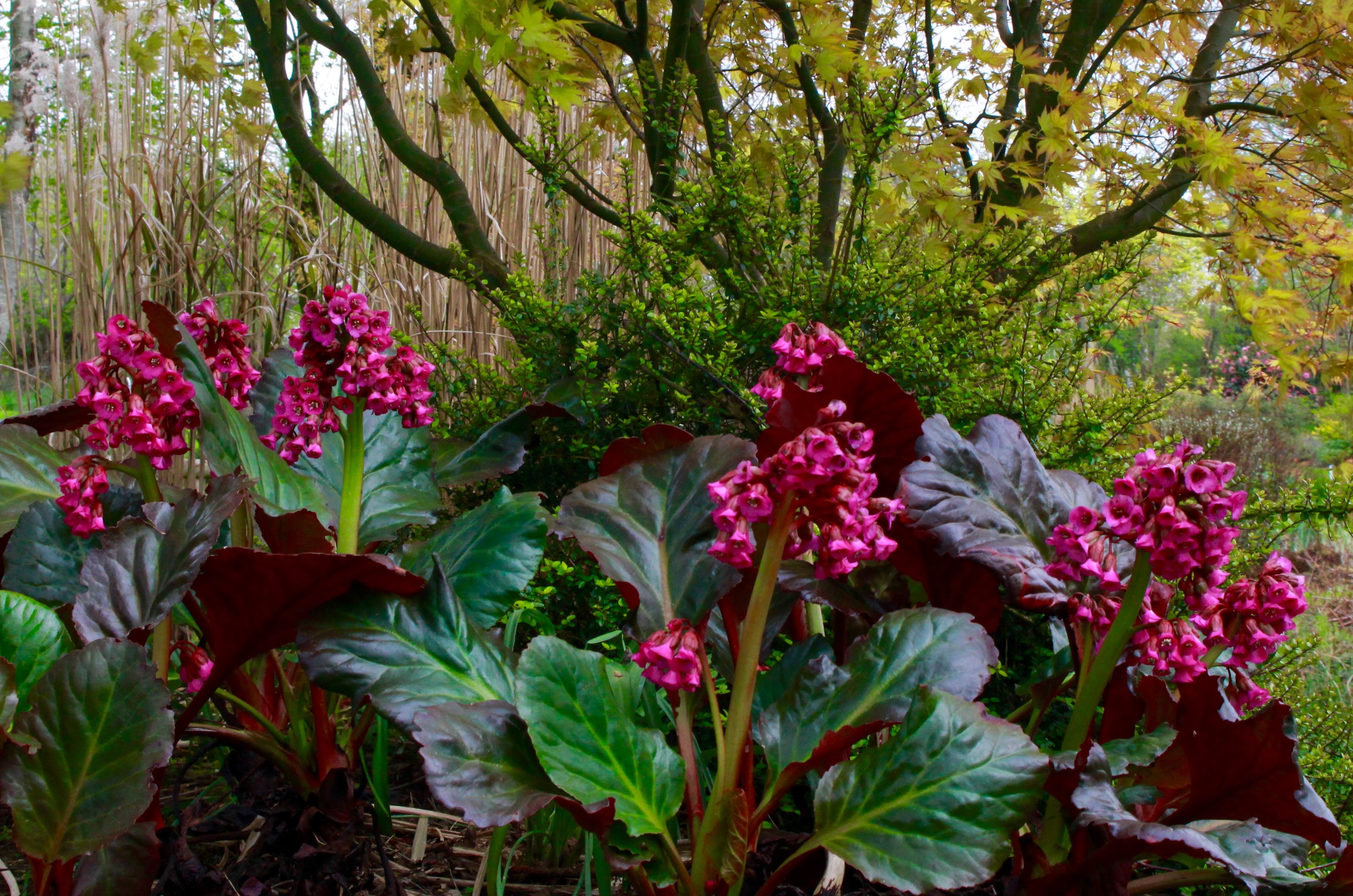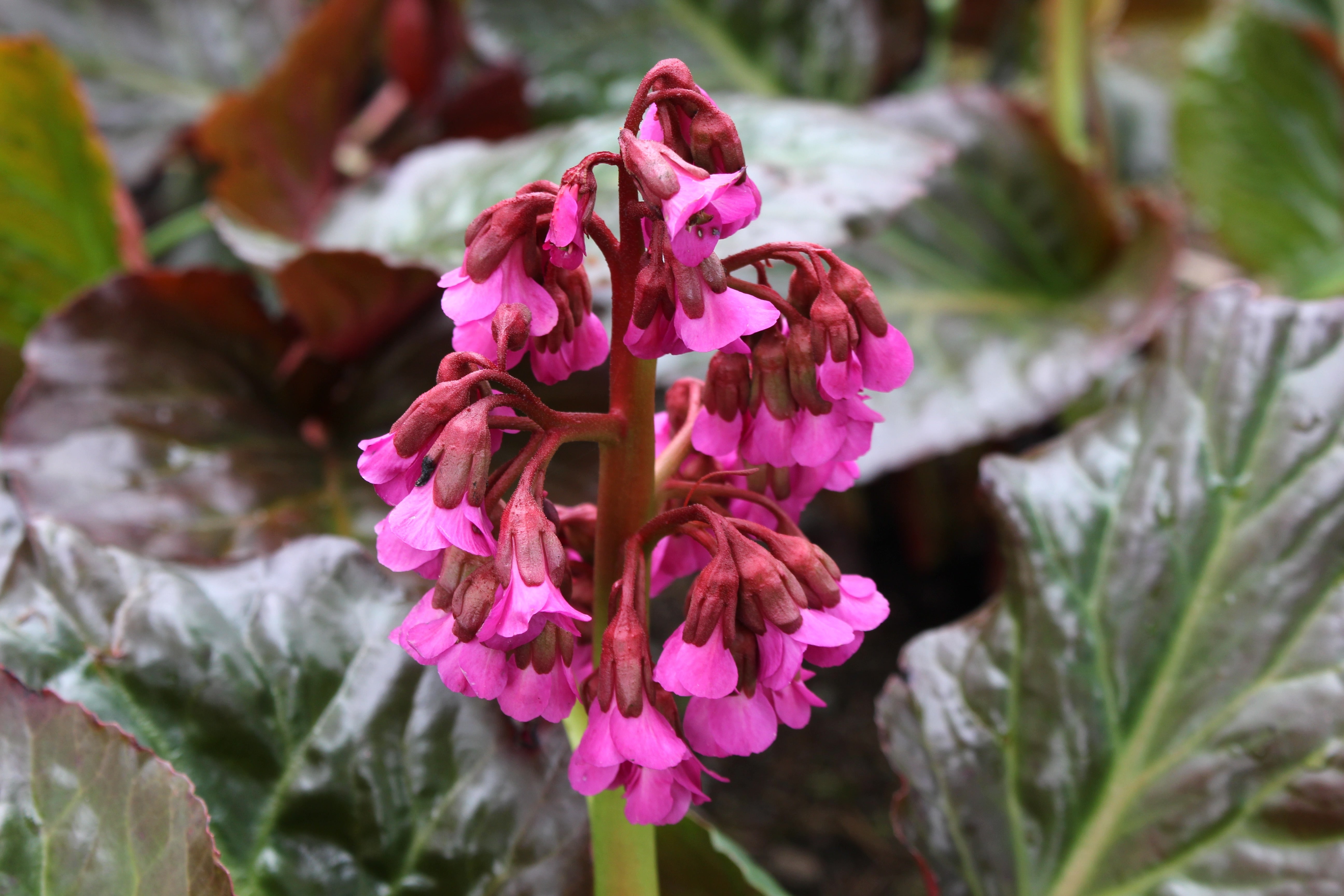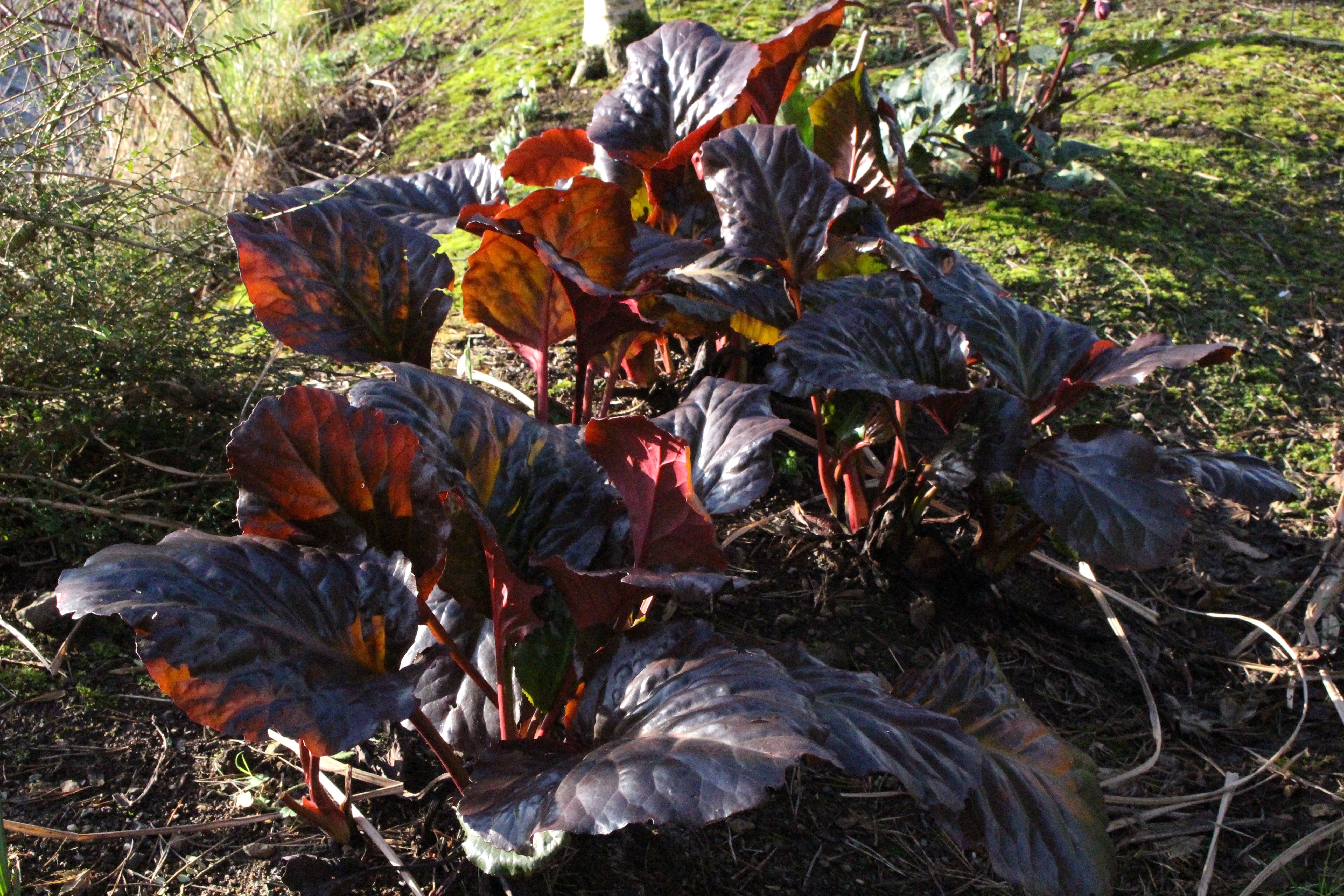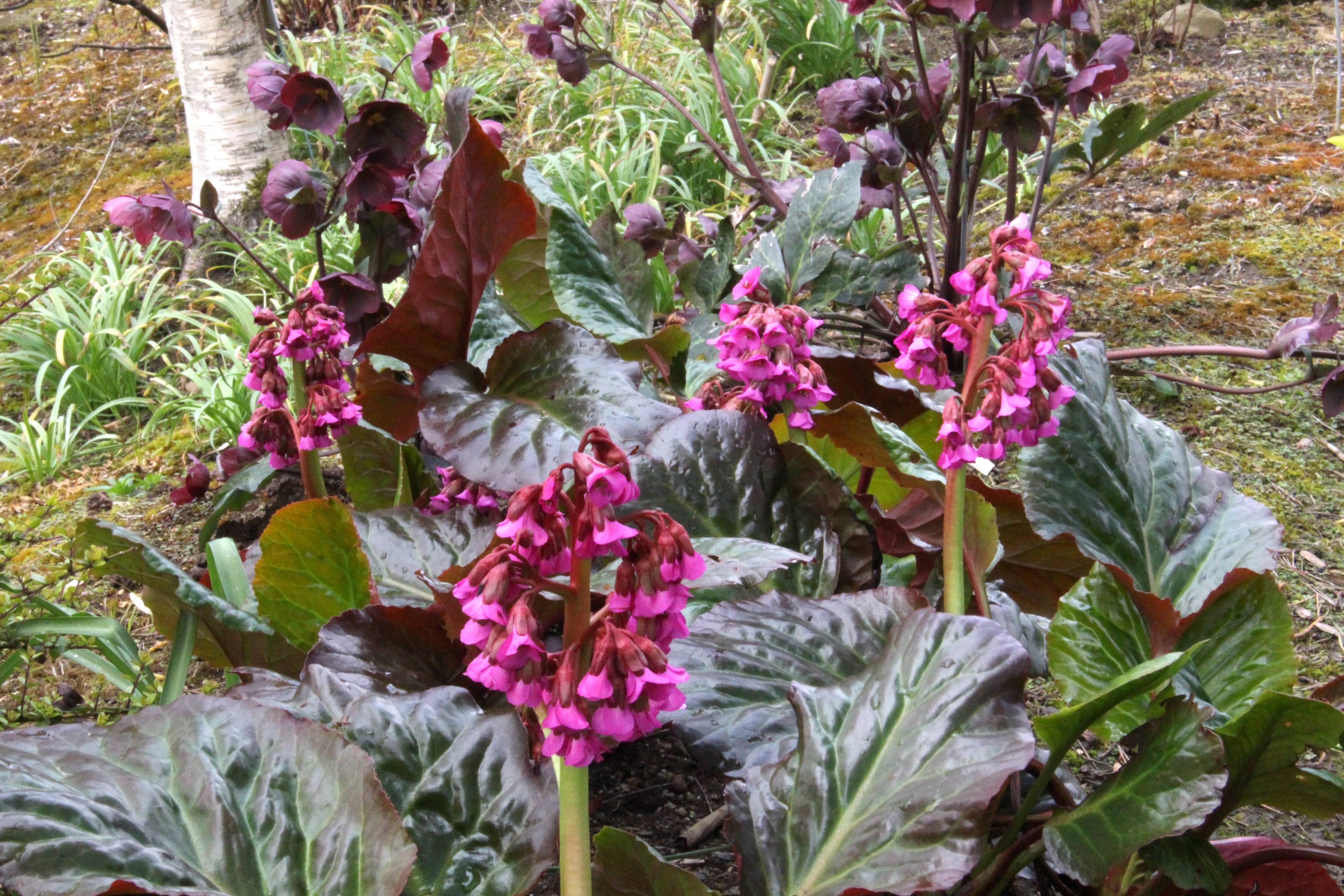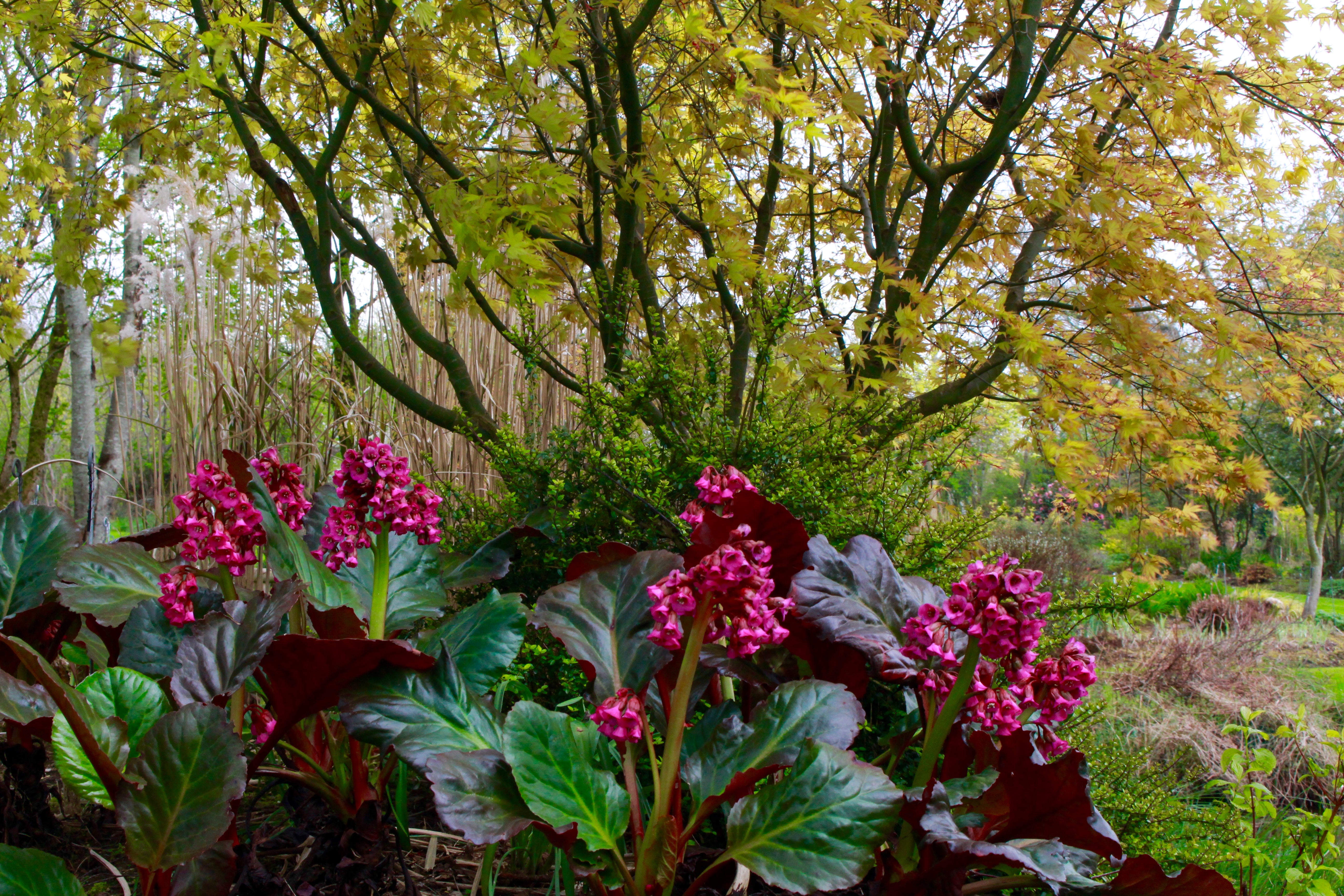Bergenia 'Eric Smith'
Approx. 0.5 litre pot
About this cultivar:
Bergenia 'Eric Smith' is the number one Bergenia in terms of colour - flowers and foliage. Quite rare, and annoying-ish to propagate, perhaps our favourite Bergenia in our own garden. It has the RHS AGM (Royal Horticultural Society Award of Garden Merit).
Eric Smith (1917-1986) was a respected breeder, and this cultivar was named after him when introduced in the 1970s by Beth Chatto. In some seasons the foliage is such a deep red it is almost black! The leaves are large and upright, the plants form tight clumps and when surrounded by snowdrops the effect is dramatic.
- Position: Full sun, Partial shade
- Soil: Almost any soil - grows well in Ballyrobert!
- Flowers: April, May, June
- Other features: Interesting Foliage or Fruit, Great Ground Cover, Royal Horticultural Society Award of Garden Merit (RHS AGM)
- Hardiness: Fully hardy - grows well in Ballyrobert!
- Habit: Clump forming
- Foliage: Evergreen
- Height: 15 - 45 cm (0.5 - 1.5 ft)
- Spread: 15 - 45 cm (0.5 - 1.5 ft)
- Time to full growth: 2 to 5 years
- Plant type: Herbaceous Perennial
- Colour: Red, pink, green
- Goes well with: Try Galanthus, Crocus tommasinianus and some woodland Anemones. At Ballyrobert we also like them in large groups, like ground cover.
About this genus:
Bergenia are clump forming herbaceous perennials that are quite common in cooler climates where they are renowned for their tropical appearance even though they don't like heat! The common names for Bergenia are pigsqueak (due to the sound produced when two leaves are rubbed together) and elephant's ears (due to the shape of the leaves).The creator of the more sober-sounding taxonomic genus name, Conrad Moench, honoured the German botanist and physician Karl August von Bergen by coining the name Bergenia in 1794.
Bergenia are valuable in the garden for many reasons. They produce attractive pink, purple or white flowers that attract many insects. Flowering occurs primarily in April, but some Bergenia will often give you a second flush later in the growing season. Bergenia also have bold, richly coloured, shapely, leathery, glossy, clumps of large, shiny, usually evergreen leaves. In the later half of the year, the leaves take on attractive tones of maroon, crimson, bronze, purple and even beetroot red.
Bergenia likes most soils that are not too dry. They prefer sun but can also grow in shady areas. If leaves are looking untidy or brown simply pluck them off to allow new ones to grow. Bergenia will slowly spread via rhizomes.
Good companions tend to be early bulbs. Try Galanthus, Crocus tommasinianus and some woodland Anemones. At Ballyrobert we also like them in large groups, like ground cover.

